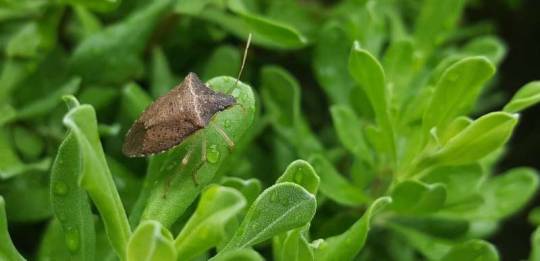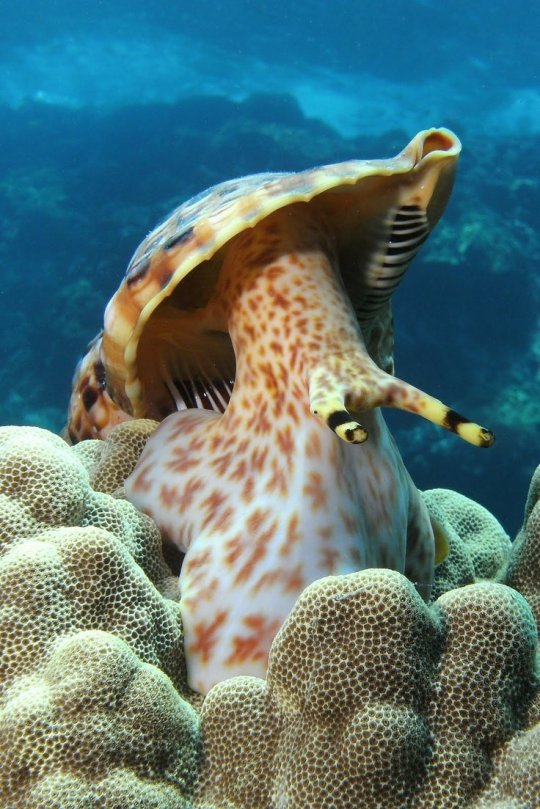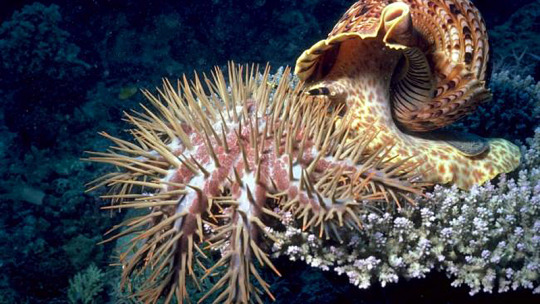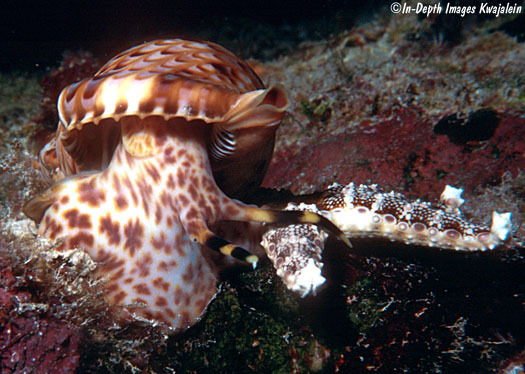#philippine produce
Explore tagged Tumblr posts
Text

Bukagan / Popwan A distant relative of jackfruit and marang. It has a flavor similar to banana.
Type: Fruits Preparation: Eaten raw. Region: Palawan, Basilan, Misamis Occidental, and Zamboanga
#philippine produce#heritage ingredient#palawan#sweet#prutas#jackfruit#durian#bukagan#zamboanga#misamis occidental
0 notes
Text




Hetalia stuff I did~ (mostly sg hahahaha)
Haven’t had the time recently to complete full illustrations so I can only give doodles 🫠



…ok yeah I can’t believe I became a fan of my own country personification
I have so many thoughts on this loser it’s insane



#the economy is producing#hetalia#hws singapore#hws malaysia#hws philippines#hws indonesia#aph thailand#aph vietnam#aph hong kong#hws hong kong#hws thailand#hws vietnam#hws asean#dear lord they have way too many tags#the msg stuff can be taken as familial or shippy
71 notes
·
View notes
Text
Not to be marxist on main but comparing the "Produced for:" and the "Produced in:" labels on any packaging tells you such a vivid story
63 notes
·
View notes
Text

music to kill yr colonizers to.
Lapu-Lapu is widely known as a hero who opposed colonization by vanquishing Portuguese explorer Ferdinand Magellan in the Battle of Mactan on April 27, 1521. Lapu Lapu was one of the two datus (chiefs) of the island of Mactan, near Cebu, in the Philippines, when Magellan arrived to the area.
In this context of rivalry between Rajah Humabon and Lapu Lapu came the arrival of Ferdinand Magellan as leader of the expedition later known as Magellan-Elcano, which would be the first expedition to circumnavigate the globe.
Upon his arrival in Cebu, Magellan forged an alliance with Rajah Humabon, who offered supplies and tribute in exchange for Magellan’s military force to subdue Lapu Lapu.
The expedition led by Magellan engaged in battle against Lapu Lapu on the island of Mactan combining the European soldiers with hundreds of Rajah Humabon’s warriors, but Lapu Lapu’s troops resisted in battle, rejected Rajah Humabon’s demands, and ended Magellan’s life.
#sza#producer#production#trax#jungle#junglist#junglism#drum and bass#dance#kill bill#anito#pre colonial philippines#dj#decolonize#decolonisation#SoundCloud#Bandcamp
4 notes
·
View notes
Photo

We are giving Love around the world by finding and posting #auditions and free workshops for you from the #UnitedKingdom to #Canada #Japan #Philippines and across the USA. We plan on posting to other countries soon. Join the nearest Talent & Skills group in or near your country, by searching Talent & Skills and give us some love too. Help us grow and invite others to our groups and post #castingcalls Let's help one another. Come check out our site and all of our social media outlets about.me/talentandskills We are worldwide. #actor #actors #acting #actress #singer #dancer #comedian #Filmmaker #filmdirector #filmproducer #producer #eventplanner https://www.instagram.com/p/CoxP8snOV4w/?igshid=NGJjMDIxMWI=
#auditions#unitedkingdom#canada#japan#philippines#castingcalls#actor#actors#acting#actress#singer#dancer#comedian#filmmaker#filmdirector#filmproducer#producer#eventplanner
2 notes
·
View notes
Text

1 note
·
View note
Text
The Spanish surnames of many Filipinos have often misled foreigners here and abroad, who are unaware of the decree on the adoption of surnames issued by Governor-General Narciso Clavería in 1849. Until quite recently in the United States, the Filipinos were classified in demographic statistics as a “Spanish-speaking minority,” along with Puerto Ricans, Cubans, Mexicans, and other nationals of the Central or South American republics. The Philippines, as is well known, was a Spanish colony when Spain was mistress of empires in the Western Hemisphere; but the Americans were “hispanized” demographically, culturally, and linguistically, in a way the Philippines never was. Yet the Spanish surnames of the Filipinos today—García, Gómez, Gutiérrez, Fernández—seem to confirm the impression of the American statistician, as well as of the American tourist, that the Philippines is just another Mexico in Asia. Nor is this misunderstanding confined to the United States; most Spaniards still tend to think of “las Islas Filipinas” as a country united to them through the language of Cervantes, and they catalogue Philippine studies under “Hispano-America.” The fact is that after nearly three-and-a-half centuries of Spanish rule probably not more than one Filipino in ten spoke Spanish, and today scarcely one in fifty does. Still the illusion lives on, thanks in large part to these surnames, which apparently reflect descent from ancient Peninsular forbears, but in reality often date back no farther than this decree of 1849.
Somehow overlooked, this decree, with the Catálogo Alfabético de Apellidos which accompanied it, accounts for another curiousity which often intrigues both Filipinos and foreign visitors alike, namely, that there are towns in which all the surnames of the people begin with the same letter. This is easily verifiable today in many parts of the country. For example, in the Bikol region, the entire alphabet is laid out like a garland over the provinces of Albay, Sorsogon, and Catanduanes which in 1849 belonged to the single jurisdiction of Albay. Beginning with A at the provincial capital, the letters B and C mark the towns along the coast beyond Tabaco to Tiwi. We return and trace along the coast of Sorsogon the letters E to L; then starting down the Iraya Valley at Daraga with M, we stop with S to Polangui and Libon, and finish the alphabet with a quick tour around the island of Catan-duanes. Today’s lists of municipal officials, memorials to local heroes, even business or telephone directories, also show that towns where family names begin with a single letter are not uncommon. In as, for example, the letter R is so prevalent that besides the Roas, Reburianos, Rebajantes, etc., some claim with tongue in cheek that the town also produced Romuáldez, Rizal, and Roosevelt!
Excerpt from the 1973 introduction to Catálogo de Alfabético de Apellidos by Domingo Abella
1K notes
·
View notes
Note
No, ppl, VPNs aren't even possible for many MANY ppl in the third world. You can't buy a VPN in a brick and mortar store, and many of us (adults who are parents of kids in schools and everything) don't even own credit cards. Many who do still cannot afford VPN because what is easily affordable to a Westerner could pay my bills for a whole month. It depends on how poorly my currency is performing against the US dollar.
Even Paypal is sth mythical. I mean, I've had pieces accepted in US magazines for what the editors said was a token payment, about 50 dollars. Man, those 50 dollars would've paid off so much! That would be a FORTUNE. But I had to waive the payment EVERY time because Paypal doesn't work in my country. Grrr.
That doesn't mean third world countries listed on the Paypal site can use it either. My country is on it but every time I filled surveys etc and they transferred the money, I couldn't get my bank to let me have it. I know a third worlder in another country who has had that happen to them too.
My heart goes out to fellow readers and writers in Malaysia. Some of the most mindblowingly beautiful fics I've ever read (they were gushed abt by Americans and Brits and Aussies so I assumed the writers were native English speakers) turned out to have been written by fellow third worlders, one of those in my own country! The idea of waking up to find my country decided to ban ao3 is just... unbearable.
I hope the Malaysians find a way around it. And I hope whoever made that horrible decision gets the worst RPF written abt them AND hears about it from their political rival.
--
Yeah, I'm always meeting fans online from certain countries: Malaysia, Indonesia, the Philippines. Some places just seem to produce a lot of nerds. Or maybe more people learn English? IDK. Both a lack of (popular-with-fans) local media and a lack of economic opportunity can incentivize foreign language learning, so I'm sure that's part of it along with a certain amount of randomness.
In any case, part of why AO3 is run on donations instead of having paid accounts with better features is that a lot of core fans who write the fic and make the recslists and make fandom happen turn out to be in situations where they literally cannot pay even if they have the money.
Someone who's popular might be able to get foreign friends to pay for their VPN, but even then, can they actually get access to it? Questionable.
As for the last, it will be with their political rival, and you know it! They'll have to hear from some aide. ;D
567 notes
·
View notes
Text
Dandelion News - January 15-21
Like these weekly compilations? Tip me at $kaybarr1735 or check out my Dandelion Doodles!
1. Landmark debt swap to protect Indonesia’s coral reefs

“The government of Indonesia announced this week a deal to redirect more than US$ 35 million it owes to the United States into the conservation of coral reefs in the most biodiverse ocean area on Earth.”
2. [FWS] Provides Over $1.3 Billion to Support Fish and Wildlife Conservation and Outdoor Access

“Through these combined funds, agencies have supported monitoring and management of over 500 species of wild mammals and birds, annual stocking of over 1 billion fish, operations of fish and wildlife disease laboratories around the country, and provided hunter and aquatic education to millions of students.”
3. Philippine Indigenous communities restore a mountain forest to prevent urban flooding

“Indigenous knowledge systems and practices are considered in the project design, and its leaders and members have been involved throughout the process, from agreeing to participate to identifying suitable land and selecting plant species that naturally grow in the area.”
4. Responsible Offshore Wind Development is a Clear Win for Birds, the U.S. Economy, and our Climate

“[T]he total feasible offshore wind capacity along U.S. coasts is more than three times the total electricity generated nationwide in 2023. […] Proven strategies, such as reducing visible lights on turbines and using perching deterrents on turbines, have been effective in addressing bird impacts.”
5. Illinois awards $100M for electric truck charging corridor, Tesla to get $40M

“The project will facilitate the construction of 345 electric truck charging ports and pull-through truck charging stalls across 14 sites throughout Illinois[…. E]lectrifying [the 30,000 daily long-haul] trucks would make a huge impact in the public health and quality of life along the heavily populated roadways.”
6. Reinventing the South Florida seawall to help marine life, buffer rising seas

“[The new seawall] features raised areas inspired by mangrove roots that are intended to both provide nooks and crannies for fish and crabs and other marine creatures and also better absorb some of the impact from waves and storm surges.”
7. Long Beach Commits to 100% All-Electric Garbage Trucks
“[Diesel garbage trucks] produce around a quarter of all diesel pollution in California and contribute to 1,400 premature deaths every year. Electric options, on the other hand, are quieter than their diesel counterparts and produce zero tailpipe emissions.”
8. ‘This Is a Victory': Biden Affirms ERA Has Been 'Ratified' and Law of the Land

“President Joe Biden on Friday announced his administration's official opinion that the amendment is ratified and its protections against sex-based discrimination are enshrined in the U.S. Constitution.”
9. A Little-Known Clean Energy Solution Could Soon Reach ‘Liftoff’

“Ground source heat pumps could heat and cool the equivalent of 7 million homes by 2035—up from just over 1 million today[…. G]eothermal energy is generally considered to be more popular among Republicans than other forms of clean energy, such as wind and solar.”
10. Researchers combine citizens' help and cutting-edge tech to track biodiversity

“Researchers in the project, which runs from 2022 to 2026, are experimenting with tools like drones, cameras and sensors to collect detailed data on different species, [… and] Observation.org, a global biodiversity platform where people submit pictures of animals and plants, helping to identify and monitor them.”
January 8-14 news here | (all credit for images and written material can be found at the source linked; I don’t claim credit for anything but curating.)
#good news#hopepunk#nature#national debt#coral reef#conservation#funding#fish and wildlife#philippines#indigenous#agroforestry#green infrastructure#offshore wind#wind energy#electric vehicles#illinois#florida#sea wall#habitat#california#equal rights#human rights#us politics#geothermal#biodiversity#citizen science#climate change#invasive species#endangered species#clean energy
269 notes
·
View notes
Text

Badak (or local chempadak) Sweet and has a flavor that combines jackfruit and durian. Smaller than the usual jackfruit. Type: Fruit Preparation: The seeds are edible and can be roasted or boiled. In addition, the seeds can be sundried, roasted, and pounded to make coffee. Unripe badak can also be cooked as a vegetable. Region: Palawan
0 notes
Text
Jessica Folcker - Tell Me What You Like 1998
"Tell Me What You Like" is the debut single by Swedish-Senegalese singer Jessica Folcker, released in 1998 from her debut studio album, Jessica. It was produced by Denniz Pop, Kristian Lundin and Max Martin. Pop and Martin co-wrote it with British music producer and songwriter Herbie Crichlow. It was a hit in Europe, peaking at number ten in Sweden, number 13 in France, number 16 in Norway and number 20 in Denmark. Max Martin also wrote Britney Spears' "Baby One More Time" that was released the same year, if you noticed the resemblance.
Jessica started as a backing singer for Ace of Base and Dr. Alban. She also performed the chorus in Leila K's hit "Electric" and did background vocals for E-Type. Her debut album was an instant hit, and Jessica became an international star overnight. As a result, Jessica travelled to Asia for a six-week-long promotional tour across Japan, the Philippines, South Korea, Taiwan and Thailand, resulting in high sales in the region, including selling gold. In South Korea, her remake of David Foster classic "Goodbye" was used as the theme ballad for the movie A Promise, and rapidly became the most frequently played song on South Korean radio.
"Tell Me What You Like" received a total of 65,4% yes votes!
youtube
424 notes
·
View notes
Text
Two tropes I love are TimKon Clone Baby AUs and Tim being of Asian descent, so what if we combine them?
In his grief induced, sleep deprived spiral Tim manages to produce a viable embryo and conks out right after confirming that it has no detectable defects and will not terminate if he takes his eyes off it.
When he wakes up he realizes how fucked up this whole situation is but by then accelerated aging has already grown the child to be visible with the naked eye and Tim can't bring himself to abort it despite the moral concerns and ramifications of keeping it. It's not Kon, he knows that, but it's the closest he has to him so he decides to let incubation progress and deal with the consequences.
He stops the accelerated growing to give himself more time organising how he's going to mange this and so he can tell the relevant people beforehand instead of just turning up with a child. But then Bruce dies, or so everyone thinks, and Tim leaves to get him back himself when it becomes clear that he can't rely on anyone to help.
His search for Bruce works on a different time schedule driven by desparation and recklessness because he needs to get back to the child as fast as humanly possible. This causes him to take more risks and be less forgiving in his actions and he manages to gather enough evidence sooner. He sends the information to the JL and makes sure to prevent Ra's from continuing the fight in Gotham before getting the kid and dropping off the grid, letting everyone else make their own assumptions on what happened to him. Their actions when he confided in them about his theory had shown him that he can't trust them anymore, so he leaves.
He rushes to prepare his departure with the now born baby and leaves for his mother's childhood home in the Philippines. He'd visited it a few times with his mother and once with Kon but nobody else knows about it. (What Tim doesn't know is that in his haste to disappear he forgot to erase the simplest thing.)
Tim raises the child there, learning more about his own heritage and meeting estranged family members along the way.
He's using tech to disguise himself, appearance and biosignatures, from both the Justice League and the remains of Ra's empire, with Tam and Pru keeping him up to date on significant happenings respectively.
Meanwhile Dick has been worrying about Tim, which is only amplified when Bruce comes back and Tim doesn't, when Bruce asks about him and Dick doesn't have an answer, when Kon and Bart return with grandiose tales of the future to no best friend to tell them to.
Bruce starts searching for Tim during his recovery and Cassie catches Kon and Bart up to everything that happened between their deaths and Tim's disappearance.
They notice she's holding back on telling them something and she reluctantly shares how she caught him trying to clone Kon. Kon, overwhelmed and disturbed by the news, leaves them to process by himself. When he's calmed down and rationalised that he doesn't have the whole story, since Tim isn't here to tell it, he goes to the lab to look for... anything, really. A notebook, a diary, something that can tell him what Tim was thinking.
He finds the lab empty, all notes and cloning equipment destroyed. But on the computer he finds evidence that Tim was here after he disappeared, and that the cloning was successful.
So Kon is sure that Tim is out there, that he's with a child and that he went of his own accord. Where would Tim go, avoiding everyone that would search for him? That could be anywhere!
But does the child, his child, change his decision making? Kon can think of one place, far enough to not raise unwelcome memories of what he's leaving behind, sentimental enough to want to introduce his child to and secret enough that only one other living person knows about it. Or no other, considering that Tim was gone before he could find out that Kon's alive from anyone in the community and the news isn't public yet.
Kon flies to the home Tim had shown him once and finds it lived in. Toys and food and clothes and pictures all over the place. But no Tim and no baby. So Kon waits.
Tim comes back a few hours later, child in tow, from visiting his great aunt and uncle who he has started visiting regularly to learn about his family's history and share about his and his mother's lives in America. They're slowly starting to not need his cousins to translate anymore as Tim is learning enough Filipino to make up for their limited English.
The sight that greets Tim when he rounds corner is Kon tracing the pictures that Tim has taken and hung up since moving here.
Tim bursts into tears as he sees Kon, who himself startles, at Tim's entrance. They have a long, tearful reunion before Kon asks about the kid and Tim explains everything.
In the end Kon isn't happy about what happened but he sees the difference in how Clark and Luthor treat him to how Tim loves the child. He sees how Tim regrets hurting Kon with his actions and how what he did was not out of greed but out of grief.
Kon visits often after that, getting introduced to Tim's extended family and Tam and Pru. He eventually brings up letting other people know and Tim's apprehensive but lets Kon bring Bart the next time. Bart who is ecstatic at being an uncle and will definitely spoil the kid rotten. Together they manage to convince Tim to give telling other people a try, not necessarily about the kid or his location but at least that he's alive.
So Tim starts video calls with Bruce and Dick and Cassie, telling them that he's fine but that he won't come home, talking about what happened and how each of them hurt because of it. Eventually he'll let Kon take him for a visit in person. Eventually he'll tell them about his son, scared and hopeful, and they'll tell him that they'd love to meet him. Eventually he introduces them and watches everyone coo and baby talk to him.
Eventually Tim's anxiety about seeing them will turn into excitement and his son will grow up knowing his family in the Philippines and his family in America.
#tim drake#dcu#batfam#red robin#conner kent#kon el#timkon clone baby au#could be romantic or platonic#in my heart they're in love#bruce wayne#dick grayson#asian american tim drake#cloning#heritage#filipino tim drake#it would be really cool if somebody who knows about filipino culture wrote this and made the parts with Janet's side of the family authenti
161 notes
·
View notes
Text
FML MIXTAPE VOL. 1 - UNAKAYA


The first compilation I’ve been a part of! For Music Lovers FML Mixtape Vol 1
#trax#production#dance#footwork#jungle#archives#SoundCloud#anito#producer#dj#filipino#pre colonial philippines#Bandcamp
2 notes
·
View notes
Photo

Happy Sunday. Recently, We posted several new #auditions around the world. From the #Philippines to the #Unitedakingdom to #Canada and across the USA. Join the closest FB group near you by searching Talent & Skills and the country you live in. Original group is located in the USA. About.me/talentandskills Join, like, follow, and share our social media and groups so we can continue to get you #castingcalls around the world. Post an #audition or find one. #actors #actor #actress #singer #dancer #Filmmaker #filmdirector #filmproducer #fashiondesigner #Producer #eventplanner https://www.instagram.com/p/CpsFzwxutZl/?igshid=NGJjMDIxMWI=
#auditions#philippines#unitedakingdom#canada#castingcalls#audition#actors#actor#actress#singer#dancer#filmmaker#filmdirector#filmproducer#fashiondesigner#producer#eventplanner
1 note
·
View note
Text

















Рог тритона , или харония тритон , или тритонов рог— брюхоногий моллюск из рода Charonia . В древнегреческой мифологии существует легенда, что Зевс наградил Пана рогом Тритона, который издавал громкие звуки, служа сигнальной трубой.
Раковина Тритониса одна из самых больших ракушек в мире - ее длина до 45 см. Имеет башневидную форму, с крупным последним оборотом и стройной заострённой вершиной. Общая окраска раковины харонии— бежевая, с множеством С-образных пятен и линий коричневого цвета. Спиральные бороздки оранжевые, зародышевая раковина фиолетовая. Окраска ноги моллюска ярко-жёлтая с широкими поперечными черными полосами.
Тритонов рог обитает на глубине 5—30 м. Населяет коралловые рифы и мелководья. Этот брюхоногий моллюск хищник. Питается в основном морской звездой «терновый венец», морскими ежами, гребешками. Слюнные железы моллюска вырабатывают секрет, содержащий 3—4 % свободной серной кислоты, а также аспарагиновую кислоту, приводящую иглокожих в состояние оцепенения.
Распр��странена харония тритон в Тропическом Индо-Тихоокеанском районе - от Филиппинских островов до Окинавы. На островах Океании раковины этого моллюска применяли в качестве музыкального инструмента — трубы. Островитяне высверливали отверстие в верхних оборотах завитка, что позволяло получать звуки различных тональностей и исполнять мелодии.
Triton's horn, or Charonia triton, or Triton's horn is a gastropod mollusk of the genus Charonia. In ancient Greek mythology, there is a legend that Zeus awarded Pan with Triton's horn, which made loud sounds, serving as a signal trumpet.
Triton's shell is one of the largest shells in the world - its length is up to 45 cm. It has a tower-shaped shape, with a large last whorl and a slender pointed apex. The general color of the Charonia shell is beige, with many C-shaped spots and lines of brown color. Spiral grooves are orange, the embryonic shell is purple. The color of the mollusk's foot is bright yellow with wide transverse black stripes.
Triton's horn lives at a depth of 5-30 m. It inhabits coral reefs and shallow waters. This gastropod is a predator. It feeds mainly on the crown-of-thorns starfish, sea urchins, and scallops. The salivary glands of the mollusk produce a secretion containing 3-4% free sulfuric acid, as well as aspartic acid, which causes echinoderms to become stupefied.
The triton charonia is widespread in the tropical Indo-Pacific region - from the Philippines to Okinawa. On the islands of Oceania, the shells of this mollusk were used as a musical instrument - a pipe. The islanders drilled a hole in the upper turns of the curl, which allowed them to produce sounds of various tonalities and perform melodies.
Источник: //www.youtube.com/watch?v=lV1D_QmbehA&ab_ channel =JamesKregness, //dzen.ru/a/X5nMW5A3CFgh7EpC, /animals.pibig.info/37363-haronija-triton.html,//i-prize.ru /products / charonia-tritonis,/seaforum.aqualogo.ru/topic/54178-улитка-рог-тритона-charonia-tritonis/,http://www.underwaterkwaj.com /shell/ triton/Charonia-tritonis.htm.
#fauna#video#animal video#marine life#marine biology#nature#aquatic animals#sea creatures#gastropod mollusk#Charonia triton#Triton's shell#starfish#ocean#benthic#coral reefs#seaweed#beautiful#animal photography#nature aesthetic#видео#фауна#природнаякрасота#природа#океан#бентосные#брюхоногий моллюск#харония тритон#коралловый риф#водоросли#морская звезда
189 notes
·
View notes
Text
In fact, far more Asian workers moved to the Americas in the 19th century to make sugar than to build the transcontinental railroad [...]. [T]housands of Chinese migrants were recruited to work [...] on Louisiana’s sugar plantations after the Civil War. [...] Recruited and reviled as "coolies," their presence in sugar production helped justify racial exclusion after the abolition of slavery.
In places where sugar cane is grown, such as Mauritius, Fiji, Hawaii, Guyana, Trinidad and Suriname, there is usually a sizable population of Asians who can trace their ancestry to India, China, Japan, Korea, the Philippines, Indonesia and elsewhere. They are descendants of sugar plantation workers, whose migration and labor embodied the limitations and contradictions of chattel slavery’s slow death in the 19th century. [...]
---
Mass consumption of sugar in industrializing Europe and North America rested on mass production of sugar by enslaved Africans in the colonies. The whip, the market, and the law institutionalized slavery across the Americas, including in the U.S. When the Haitian Revolution erupted in 1791 and Napoleon Bonaparte’s mission to reclaim Saint-Domingue, France’s most prized colony, failed, slaveholding regimes around the world grew alarmed. In response to a series of slave rebellions in its own sugar colonies, especially in Jamaica, the British Empire formally abolished slavery in the 1830s. British emancipation included a payment of £20 million to slave owners, an immense sum of money that British taxpayers made loan payments on until 2015.
Importing indentured labor from Asia emerged as a potential way to maintain the British Empire’s sugar plantation system.
In 1838 John Gladstone, father of future prime minister William E. Gladstone, arranged for the shipment of 396 South Asian workers, bound to five years of indentured labor, to his sugar estates in British Guiana. The experiment with “Gladstone coolies,” as those workers came to be known, inaugurated [...] “a new system of [...] [indentured servitude],” which would endure for nearly a century. [...]
---
Bonaparte [...] agreed to sell France's claims [...] to the U.S. [...] in 1803, in [...] the Louisiana Purchase. Plantation owners who escaped Saint-Domingue [Haiti] with their enslaved workers helped establish a booming sugar industry in southern Louisiana. On huge plantations surrounding New Orleans, home of the largest slave market in the antebellum South, sugar production took off in the first half of the 19th century. By 1853, Louisiana was producing nearly 25% of all exportable sugar in the world. [...] On the eve of the Civil War, Louisiana’s sugar industry was valued at US$200 million. More than half of that figure represented the valuation of the ownership of human beings – Black people who did the backbreaking labor [...]. By the war’s end, approximately $193 million of the sugar industry’s prewar value had vanished.
Desperate to regain power and authority after the war, Louisiana’s wealthiest planters studied and learned from their Caribbean counterparts. They, too, looked to Asian workers for their salvation, fantasizing that so-called “coolies” [...].
Thousands of Chinese workers landed in Louisiana between 1866 and 1870, recruited from the Caribbean, China and California. Bound to multiyear contracts, they symbolized Louisiana planters’ racial hope [...].
To great fanfare, Louisiana’s wealthiest planters spent thousands of dollars to recruit gangs of Chinese workers. When 140 Chinese laborers arrived on Millaudon plantation near New Orleans on July 4, 1870, at a cost of about $10,000 in recruitment fees, the New Orleans Times reported that they were “young, athletic, intelligent, sober and cleanly” and superior to “the vast majority of our African population.” [...] But [...] [w]hen they heard that other workers earned more, they demanded the same. When planters refused, they ran away. The Chinese recruits, the Planters’ Banner observed in 1871, were “fond of changing about, run away worse than [Black people], and … leave as soon as anybody offers them higher wages.”
When Congress debated excluding the Chinese from the United States in 1882, Rep. Horace F. Page of California argued that the United States could not allow the entry of “millions of cooly slaves and serfs.” That racial reasoning would justify a long series of anti-Asian laws and policies on immigration and naturalization for nearly a century.
---
All text above by: Moon-Ho Jung. "Making sugar, making 'coolies': Chinese laborers toiled alongside Black workers on 19th-century Louisiana plantations". The Conversation. 13 January 2022. [All bold emphasis and some paragraph breaks/contractions added by me.]
#abolition#tidalectics#caribbean#ecology#multispecies#imperial#colonial#plantation#landscape#indigenous#intimacies of four continents#geographic imaginaries#indigenous pedagogies#black methodologies
464 notes
·
View notes